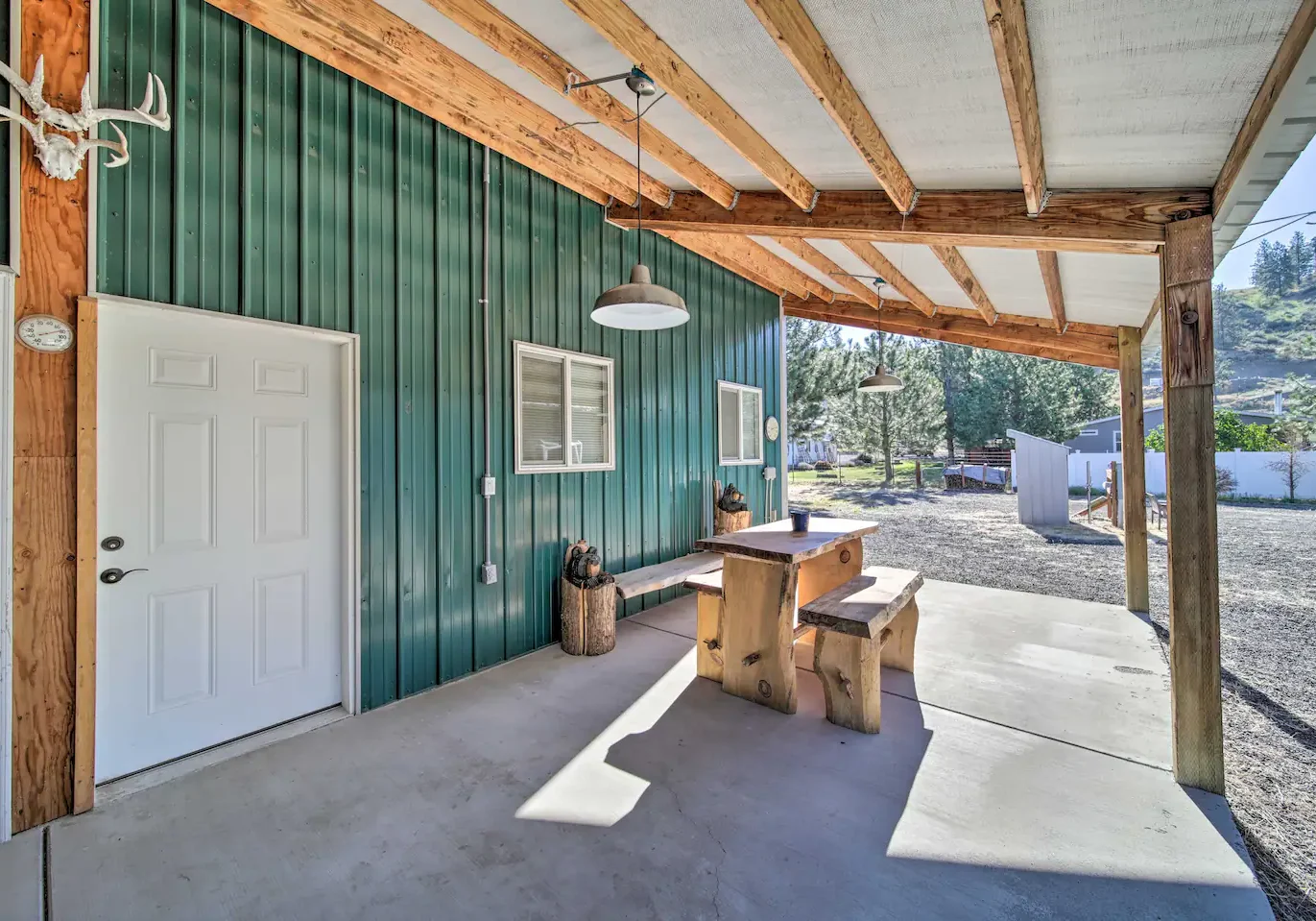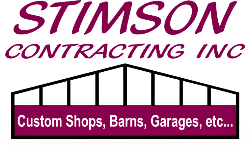
Energy-Efficient Pole Buildings: Is It Possible?
When people hear the term pole building, they often picture a simple, uninsulated shell—drafty in winter, sweltering in summer, and expensive to heat or cool. But let me tell you: those days are over. Today’s pole buildings can be surprisingly energy-efficient when designed and built the right way.
At Stimson Contracting, I’ve helped Spokane-area homeowners, farmers, and business owners turn basic pole structures into warm, comfortable, all-season spaces that keep utility bills under control. In this article, I’ll answer the big question—Is an energy-efficient pole building really possible?—and show you how to make it happen.
Table of Contents
1. Why Pole Buildings Have a Bad Reputation
Old-school pole barns were designed for one thing: basic shelter. They were quick, inexpensive structures to store equipment or livestock—comfort and efficiency weren’t part of the plan. Drafty gaps, thin metal siding, and no insulation meant sky-high energy costs if you tried to heat or cool them.
2. How Modern Pole Buildings Are Different
Modern post-frame buildings are a different story. Today’s pole buildings use:
✅ Engineered trusses for better roof loads
✅ High-quality metal or hybrid siding systems
✅ Proper slab foundations
✅ Professional insulation and vapor control
When designed for human use—like shops, offices, or barndominiums—they can meet or exceed local residential energy codes.
3. Key Design Elements for Energy Efficiency
It all starts with smart design. We help clients plan for:
Proper orientation to maximize passive solar gain
Roof overhangs for shade in summer
Double or triple-pane windows
Tight building envelope with minimal air leaks
Good design choices reduce the amount of energy you’ll need to keep the building comfortable.
4. Insulation Options That Make a Difference
Insulation is your biggest tool for efficiency. In pole buildings, we use:
Spray foam insulation: Seals gaps and provides high R-values.
Batt insulation: Affordable and effective in framed cavities.
Rigid foam boards: Great for floors or ceiling panels.
Blown-in insulation: Excellent for attics or lofts.
Combining these methods helps manage heat loss through walls, roofs, and floors.
5. Sealing and Vapor Barriers
An airtight building is an efficient building. We always include:
✅ House wraps and vapor barriers behind siding
✅ Proper caulking and sealing around windows, doors, and joints
✅ Well-sealed attic or ceiling barriers to prevent heat loss
These details stop air leaks—which can drain energy dollars faster than you’d think.
6. Energy-Efficient Windows and Doors
Don’t settle for the cheapest windows and doors. We recommend:
Double or triple-pane windows with Low-E glass
Insulated steel or fiberglass doors
Proper flashing and installation to prevent leaks
These choices boost comfort and lower heating and cooling loads.
7. Smart Heating and Cooling Systems
Energy efficiency isn’t just about the shell—it’s how you heat and cool it, too. Options include:
✅ High-efficiency furnaces or mini-split heat pumps
✅ Programmable or smart thermostats
✅ Radiant floor heating for consistent comfort
✅ Zoning systems so you only heat the spaces you use
The right system, paired with good insulation, makes a huge difference.
8. Lighting and Renewable Energy Additions
Little upgrades add up, like:
LED lighting instead of old fluorescents
Motion sensors to avoid wasted electricity
Solar panels if you have the right roof exposure
Solar water heaters or battery storage for off-grid options
We help Spokane-area clients integrate renewables when it makes sense for their building and budget.
9. Maintenance for Long-Term Savings
Even the best-built pole building needs maintenance to stay efficient. Regular tasks include:
Inspecting seals and caulking
Cleaning and inspecting insulation if accessible
Checking HVAC filters and ductwork
Upgrading bulbs and fixtures as technology improves
A little upkeep saves big on utility costs over time.
10. Conclusion: Yes, It’s Possible—and Worth It
So, is an energy-efficient pole building possible? Absolutely! With modern materials, thoughtful design, and smart construction, your pole building can be just as comfortable and affordable to operate as a traditional home or commercial space.
At Stimson Contracting, we’ve spent years helping Spokane-area property owners build pole barns, shops, and barndominiums that are warm in winter, cool in summer, and efficient all year long. If you’re ready to build smarter, let’s talk.
📞 Call today to schedule a free site consultation 509.244.2636
🌐 Visit our website for Spokane-specific building tips
📧 Request a custom quote and timeline
Read our other articles:
- Home Page
Barndominiums in Spokane: Trendy, Durable, and Affordable
10 Reasons Pole Buildings Are the Future of Rural Construction
How to Choose the Right Pole Barn Contractor
Top Pole Barn Design Ideas for 2025
How to Plan Your Dream Shop Construction Project
What You Need to Know Before Building a Pole Barn in Spokane
The Pros and Cons of Living in a Barndominium
Spokane Shop Construction: Local Regulations to Know
Custom Pole Buildings: Options That Add Value
From Barn to Barndo: The Transformation Process
Spokane’s Growing Demand for Custom Commercial Buildings
Common Mistakes to Avoid with Pole Building Projects
Is a Pole Building Right for Your Small Business?
Why Pole Barns Are Ideal for Rural Spokane Properties
Can a Pole Barn Increase Your Property Value in Spokane?
Multi-Use Shop Buildings: Storage, Work, and More
7 Creative Uses for Pole Barns in Spokane
Exploring the Cost Per Square Foot of Pole Barns
10 Barndominium Myths Debunked
Building a Shop on a Budget Without Cutting Corners
Navigating Commercial Building Codes in Spokane
Turning a Pole Barn into a Livable Space
The Complete Guide to Pole Building Construction in Spokane
What Is a Barndominium and Why Should You Build One?
Shop Construction Mistakes to Avoid
Cost Breakdown: Building a Barndominium in 2025
Post-Frame vs. Pole Barn: What’s the Difference?
Spokane Area Shop Construction: Timeline Expectations
What Makes a Barndominium So Cost-Effective?
Top 5 Mistakes to Avoid When Building a Pole Barn
Tips for Constructing a Durable Warehouse
How to Insulate Your Pole Barn for All-Season Use
Is a Barndominium Right for Your Family?
How Long Do Pole Buildings Last? Lifespan and Maintenance
How to Make Your Shop Energy Efficient
Upgrading Your Existing Pole Building
Barndominium Floor Plans That Maximize Space and Style
Adding Insulation to Pole Buildings: Pros and Cons
Durable Flooring Options for Shop Spaces
How to Prepare Your Spokane Property for Pole Barn Construction
The Evolution of Pole Barn Design: Modern Features to Consider
How to Design a Multi-Use Pole Barn That Works for You
Luxury Barndominiums: Yes, It’s a Thing
How to Prepare a Commercial Lot for Building
Must-Have Add-Ons for Your Pole Barn Project
Barndo vs Tiny Home: Which One Fits Your Lifestyle?
Modern Office Construction: Open Space vs. Private
How to Select the Right Commercial Builder
Building a Custom Barndominium: What to Expect
Energy-Efficient Pole Buildings: Is It Possible?
Storage Solutions Inside Your Workshop
Tips for Adding Electrical and Plumbing to Your Shop
How to Incorporate Rustic Charm into Your Barndo
Mixed-Use Commercial Buildings: What to Know
How Weather Affects Pole Barn Construction in the Northwest
How to Add a Workshop to Your Barndominium
Spokane Zoning Regulations for Barndominiums
Spokane Businesses Love These Commercial Floor Plans
Shop Buildings for Hobbyists: What to Include
Spokane Horse Barn Builders
Spokane Indoor Arena Builders
Spokane Agricultural Farm Buildings
Spokane Airplane Hangar Builders
Spokane Commercial Building Builder
